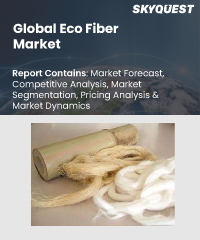
Report ID: SQMIG15A2193

Report ID:
SQMIG15A2193 |
Region:
Global |
Published Date: February, 2024
Pages:
157
|
Tables:
89 |
Figures:
76
The most dominant region in the global eco fiber market is Europe. European countries have made significant strides in sustainable and environmentally friendly practices, including the textile industry. Stringent regulations, consumer awareness, and a strong emphasis on eco-consciousness have contributed to the dominance of Europe in the eco fiber market. The region has witnessed the adoption of various eco fiber types such as organic cotton, bamboo fiber, hemp fiber, and recycled polyester, among others. European consumers' preference for sustainable textiles and the presence of eco-certification standards have driven the demand for eco fibers, making Europe the most dominant region in the market.
The fastest-growing region in the global eco fiber market is the Asia Pacific. Rapid industrialization, urbanisation, and increasing consumer awareness about sustainable practices have fueled the growth of eco fibers in the region. Countries such as China, India, and Japan have emerged as key contributors to the eco fiber market in the Asia Pacific. The region's large population, rising middle class, and growing disposable incomes have driven the demand for sustainable textiles. Additionally, government initiatives promoting sustainable development and the circular economy have further accelerated the adoption of eco fibers in the Asia Pacific region.
Our industry expert will work with you to provide you with customized data in a short amount of time.
REQUEST FREE CUSTOMIZATIONWant to customize this report? This report can be personalized according to your needs. Our analysts and industry experts will work directly with you to understand your requirements and provide you with customized data in a short amount of time. We offer $1000 worth of FREE customization at the time of purchase.

Report ID: SQMIG15A2193